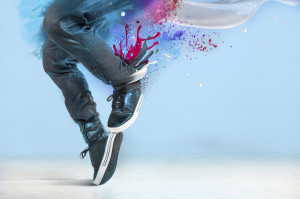 In his theoretical masterpiece Choreutics, Rudolf Laban writes that “getting the ‘feel’ of a movement gives real understanding of it.” Thus the upcoming Octa workshop, Bringing Choreutics to Life, is all about understanding movement by moving.
In his theoretical masterpiece Choreutics, Rudolf Laban writes that “getting the ‘feel’ of a movement gives real understanding of it.” Thus the upcoming Octa workshop, Bringing Choreutics to Life, is all about understanding movement by moving.
Laban’s notions of space, time, and energy are quite abstract. The complex geometrical models he developed to represent these ideas are hard to grasp. But Laban’s movement theories can always be linked to concrete movement. His ideas can be embodied.
Bringing choreutic forms to life requires imagination. As Laban advises, “it is useful from many points of view to omit entirely all precise instructions as to bodily execution and dynamic intentions, for it will be both advantageous and instructive for the performer to experiment and find for himself the most harmonious way of executing simple forms.”
Typically, choreutic forms have been taught through imitation. That is, the instructor demonstrates and the student follows. Several of the Tetra seminar students confessed, however, that they had never really been able to memorize the spatial sequences. In some way, they were never able to make the forms their own.
I love the choreutic material, and I love teaching it. I’ve had to use my imagination, not only to bring it to life for myself, but also to help students really get the feel of these forms at the body level. This, and more, are what I will be sharing in the upcoming Octa workshop.
